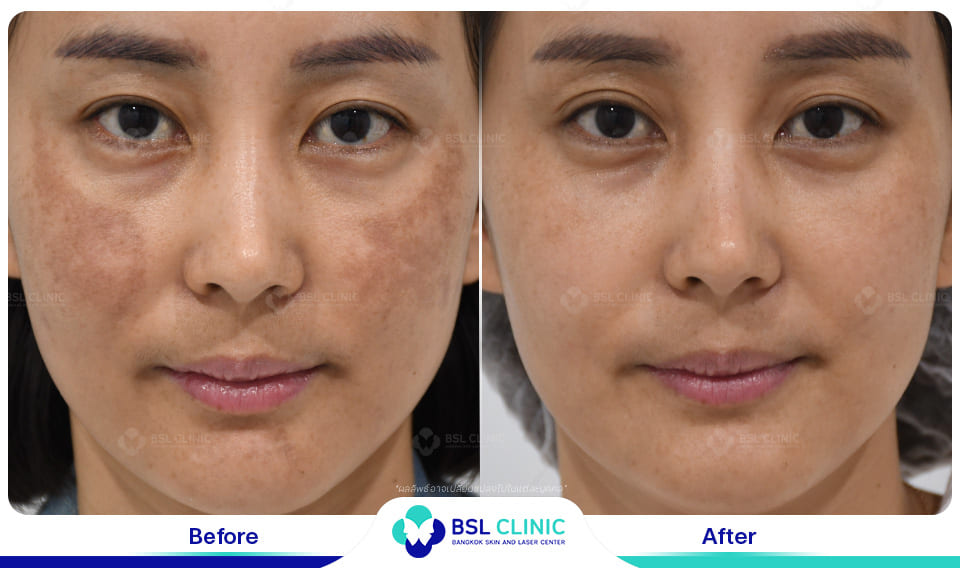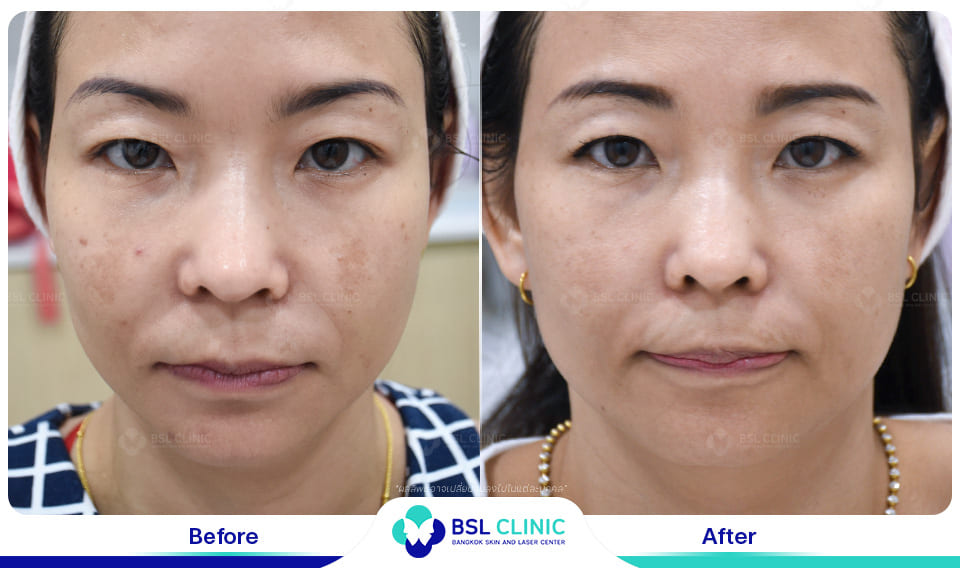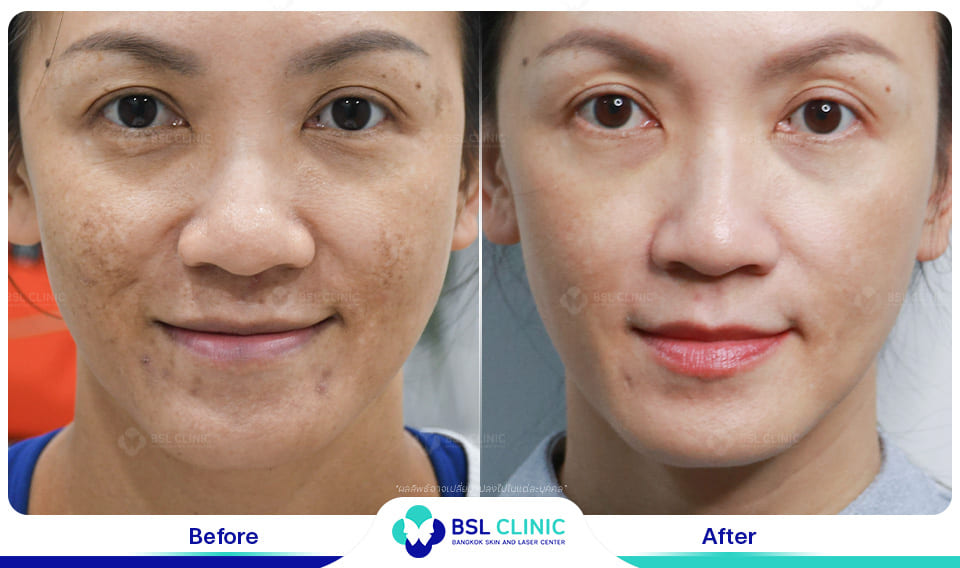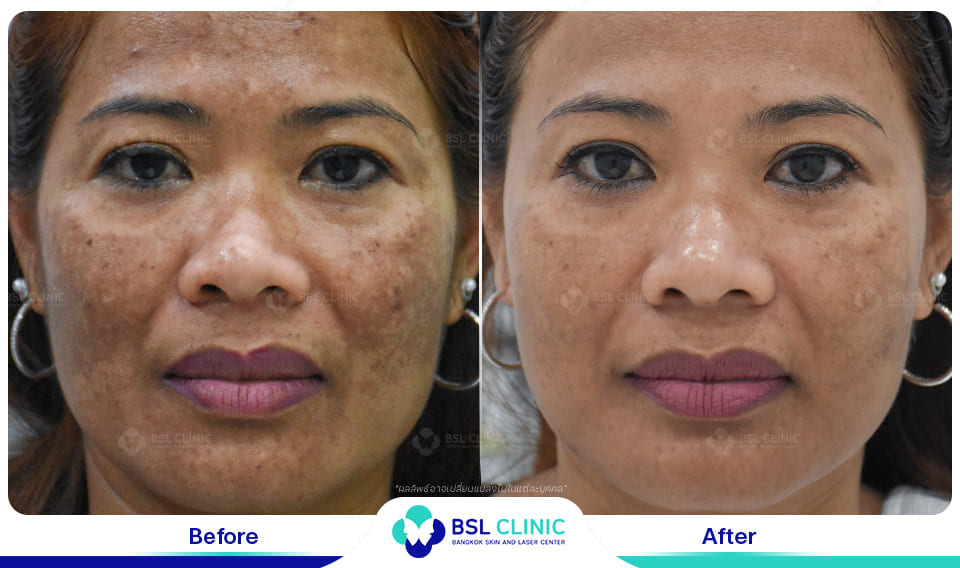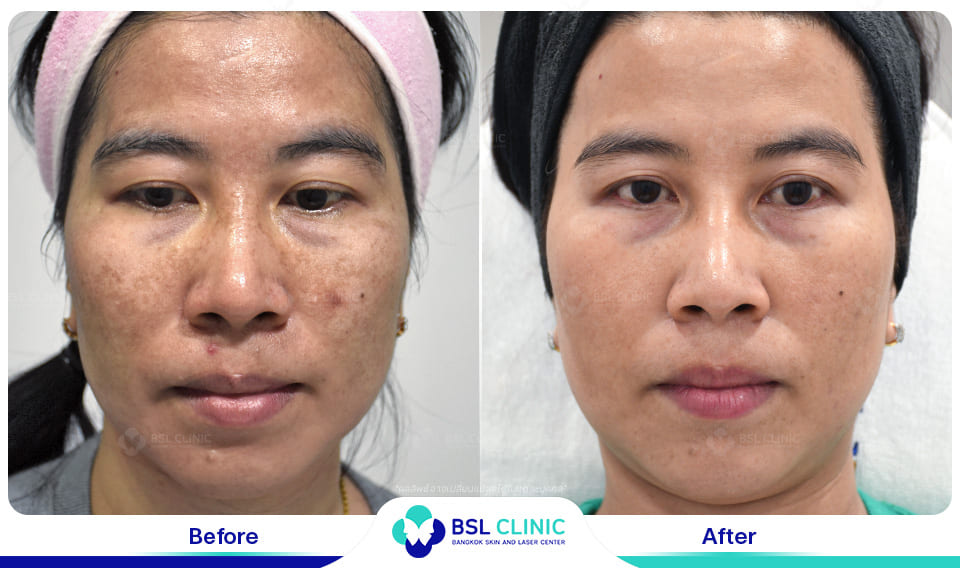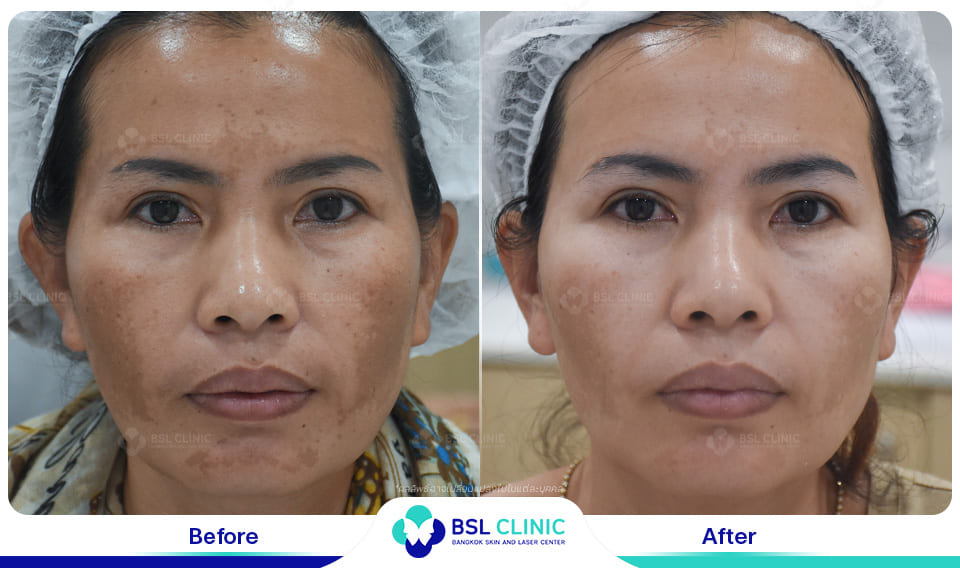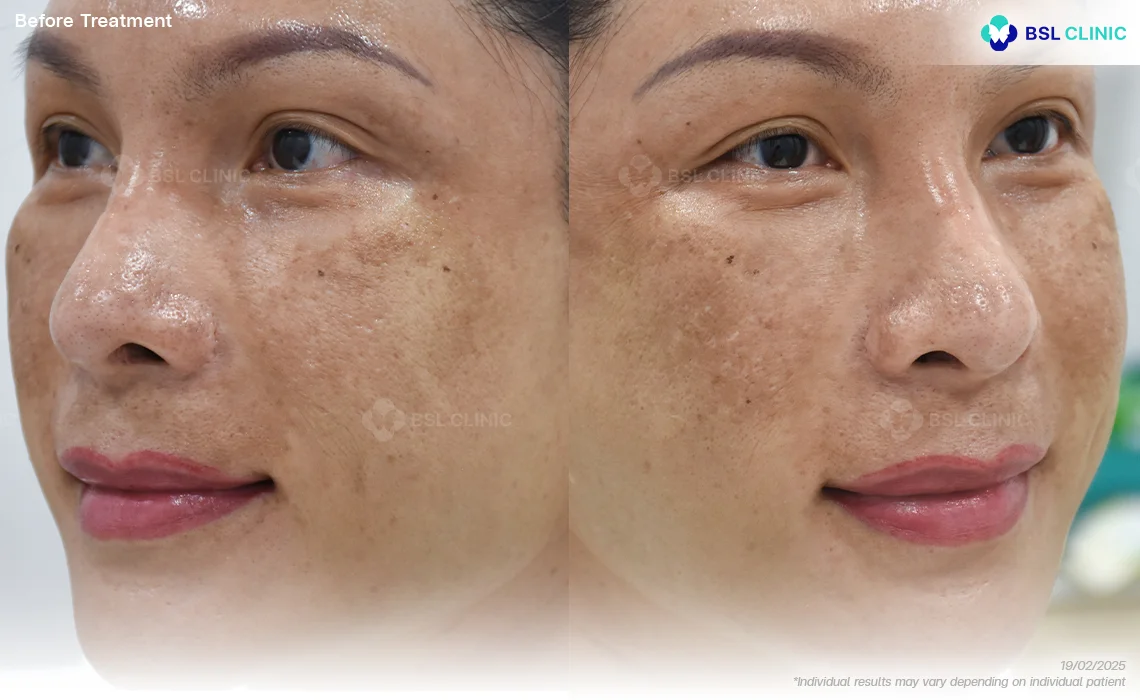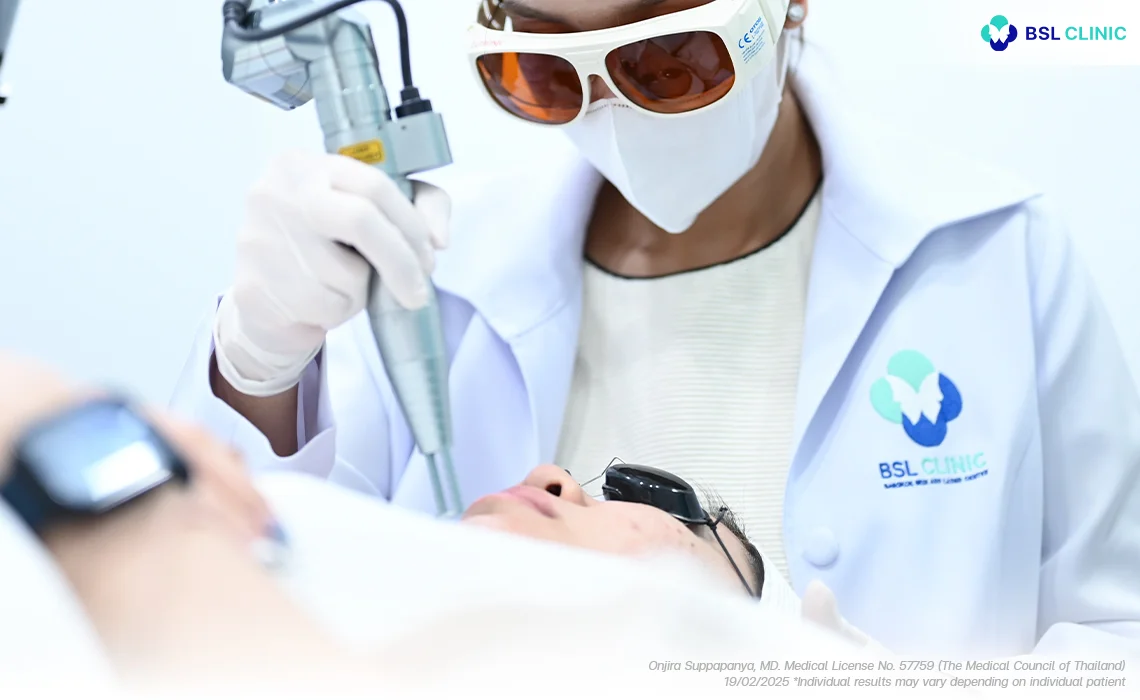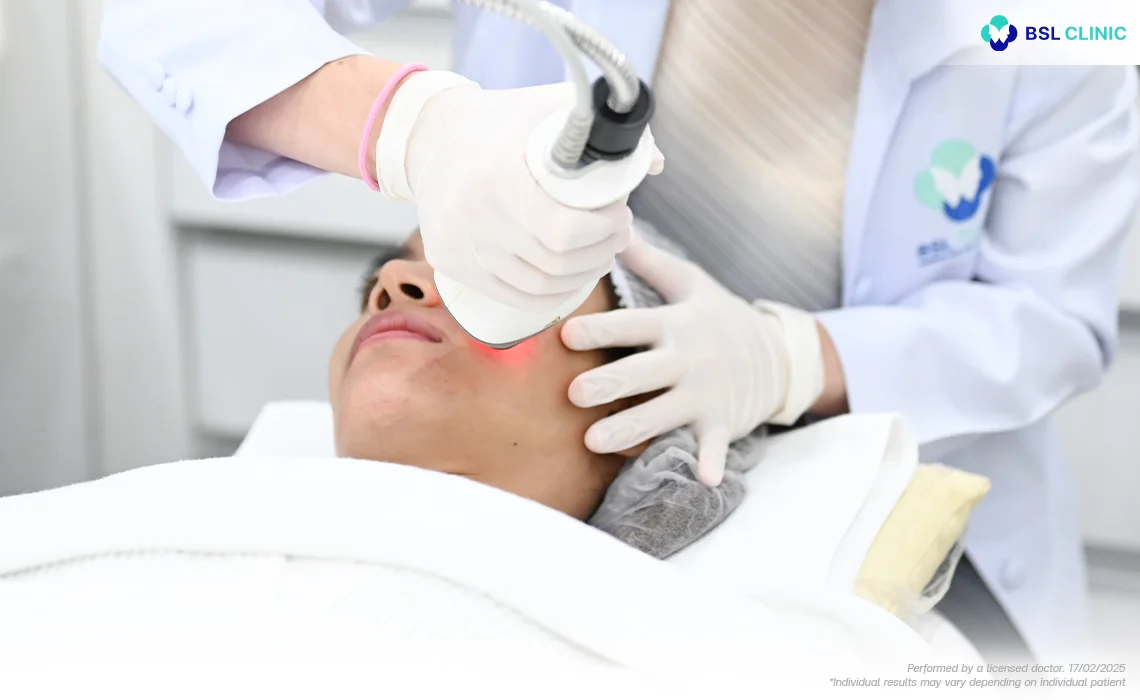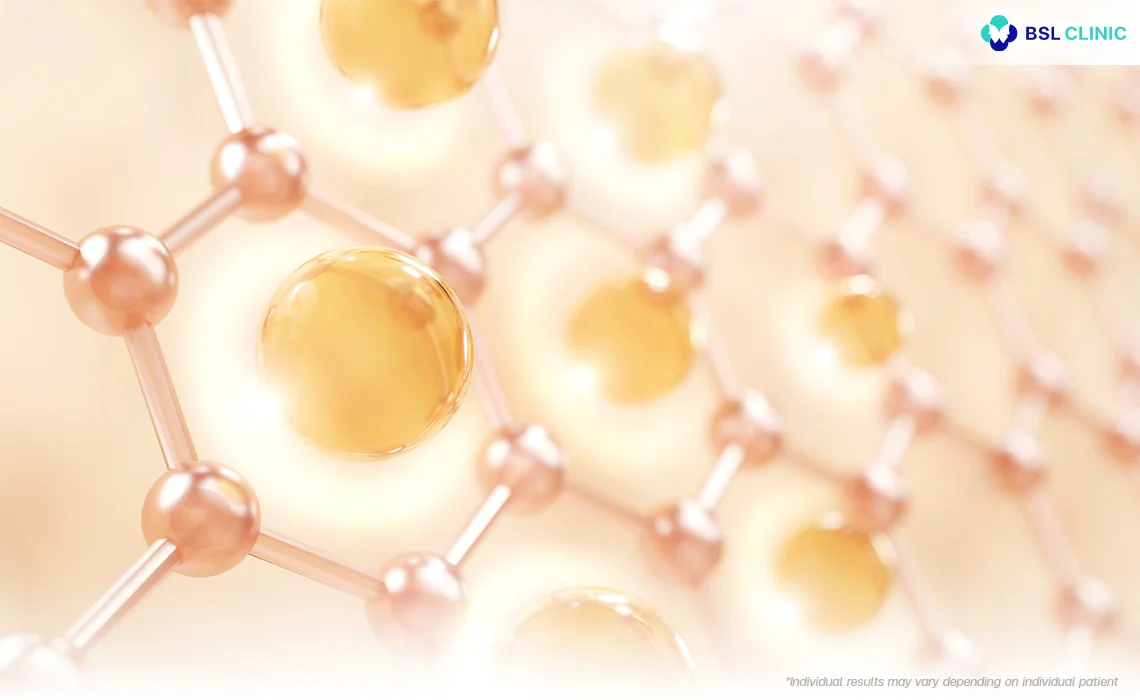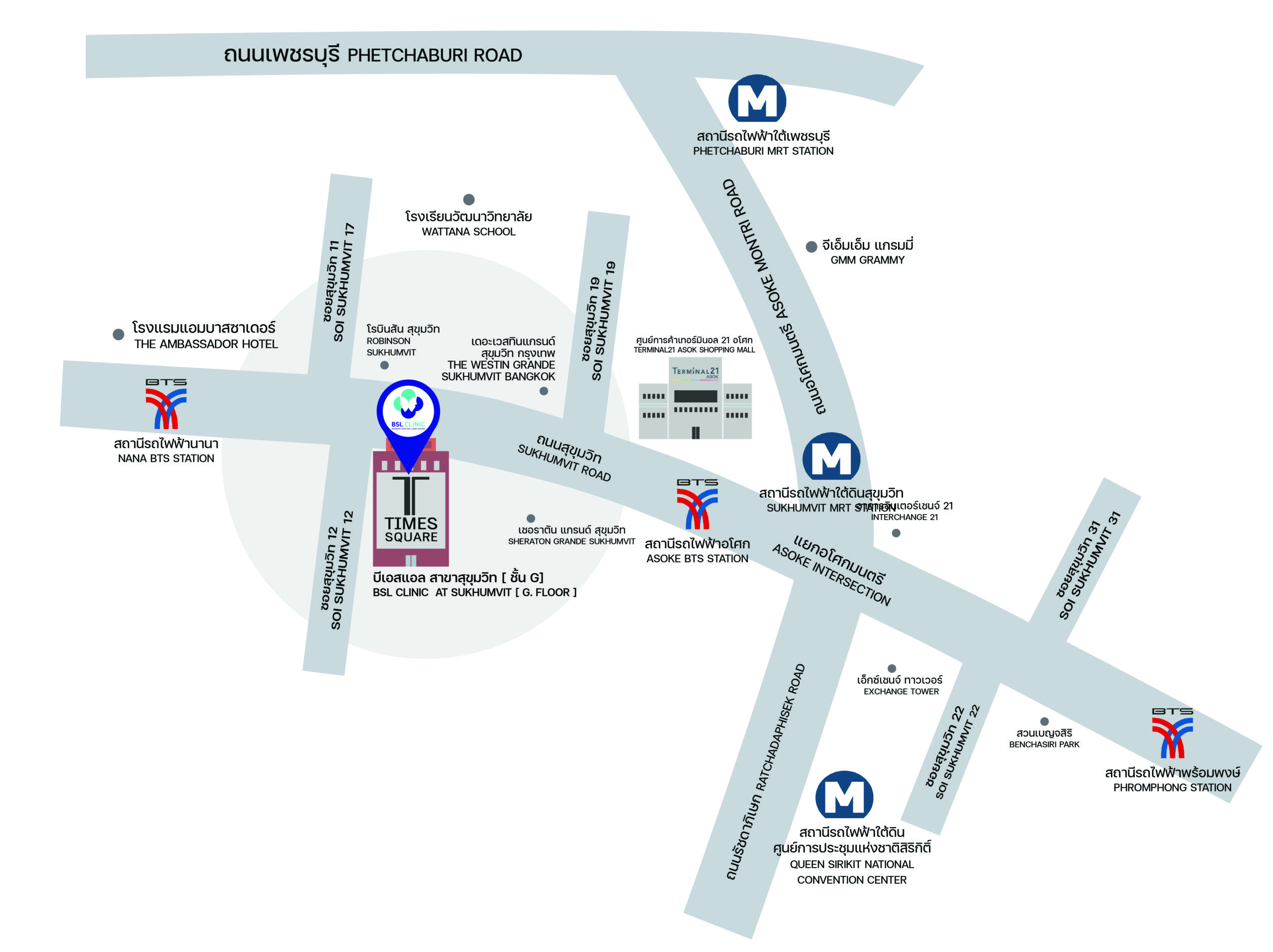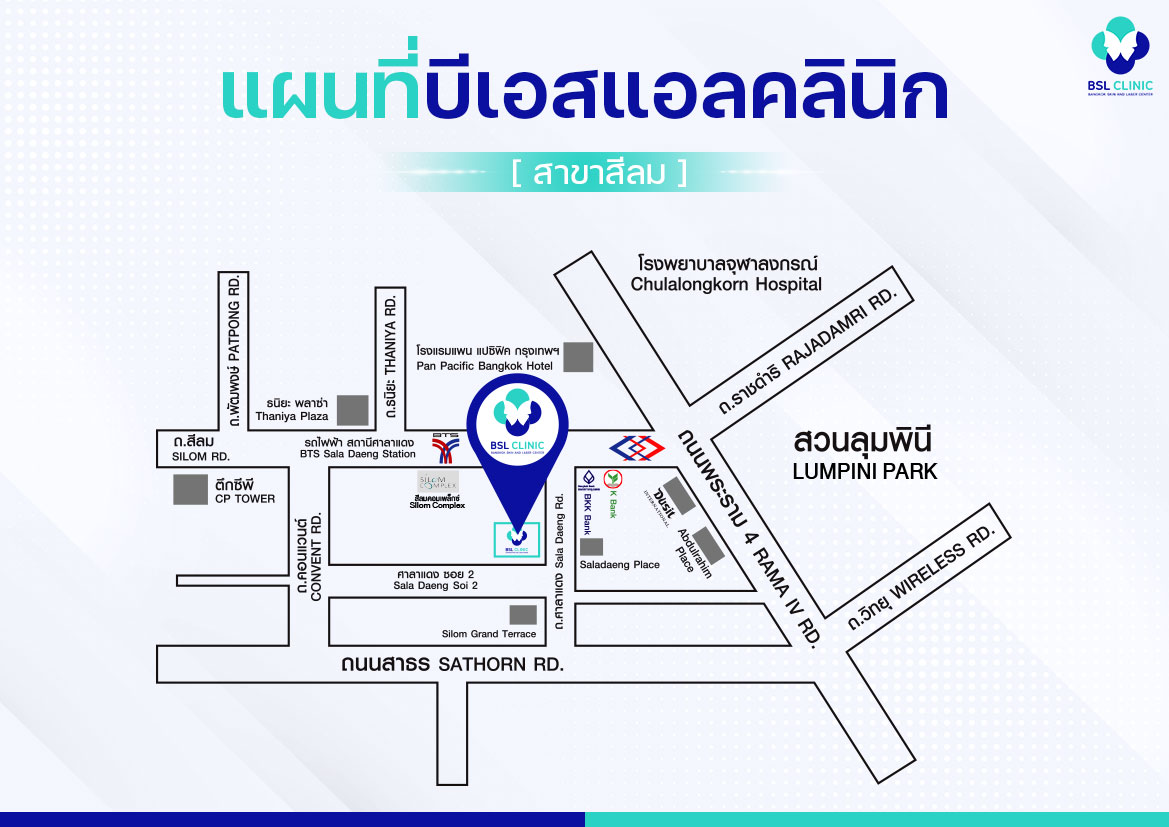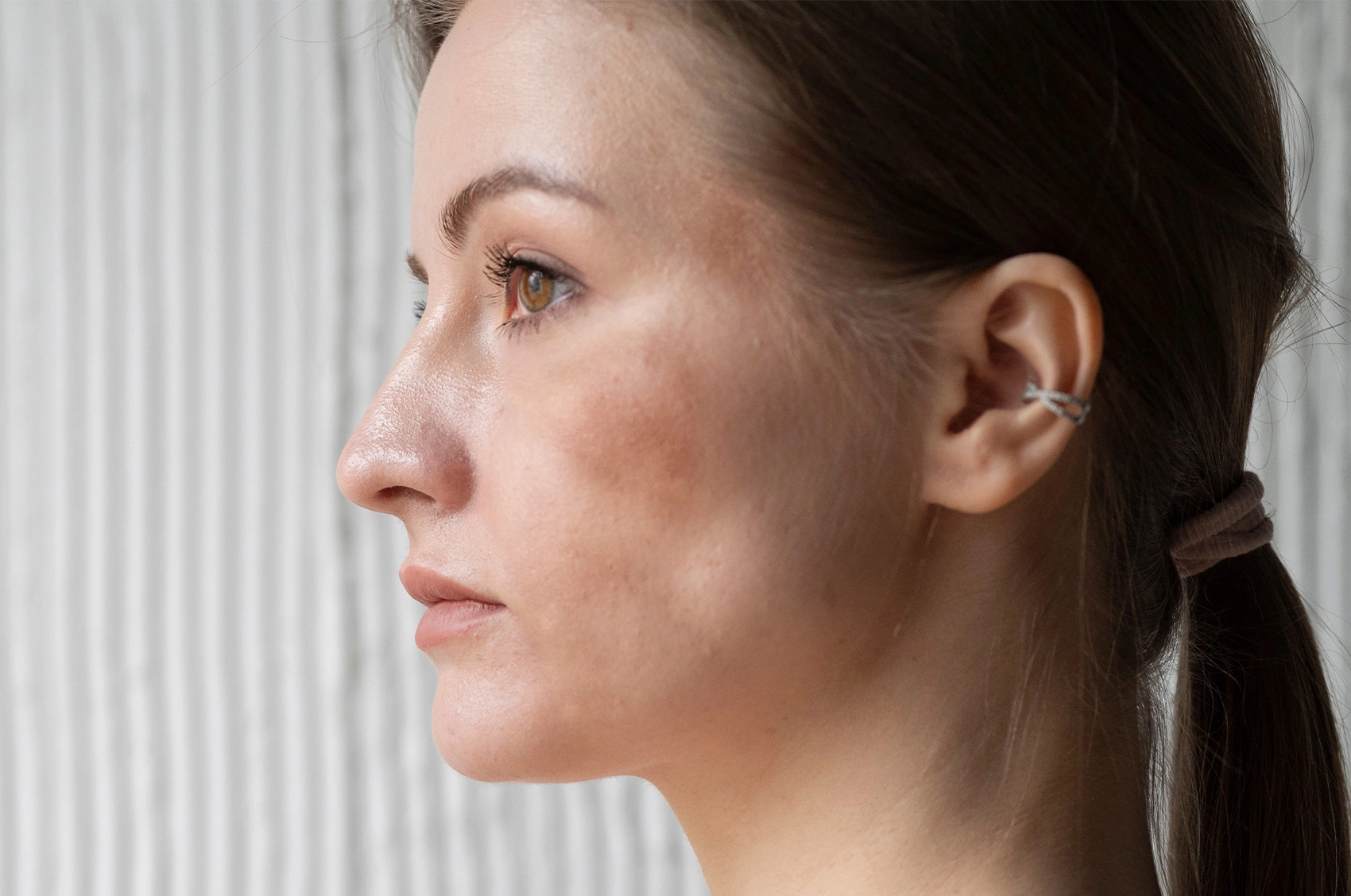
Presenter 15/02/2025
*Individual results may vary depending on individual patient
Melasma
Sun Damage Skin
Melasma can be improved with laser under the care of medical doctors.
Table of content
Melasma are black or light brown patches appearing on the forehead, chin, upper cheeks and lips of both males and females aged between 25 to 55 years.
Causes of Melasma
Hormonal Melasma
Hormonal melasma occurs due to increased estrogen levels, especially during pregnancy or contraceptive use, stimulating melanocytes to overproduce melanin¹. This leads to uneven skin darkening, often worsened by vascular changes and inflammation².
*Individual results may vary depending on individual patient
UVA or UVB
Frequent UVA and UVB exposure triggers the skin to produce more melanin, causing it to darken over time³. UVA increases oxidative stress, while UVB directly stimulates melanin production, leading to skin pigmentation⁴.
*Individual results may vary depending on individual patient
Cosmetic Application
Certain chemicals in cosmetics, like preservatives, mercury, and lead, can irritate the skin and trigger pigmentation, leading to melasma⁵. Long-term use of hair dyes and fragranced products may make the skin more sensitive, causing dark spots and worsening melasma⁶.
*Individual results may vary depending on individual patient
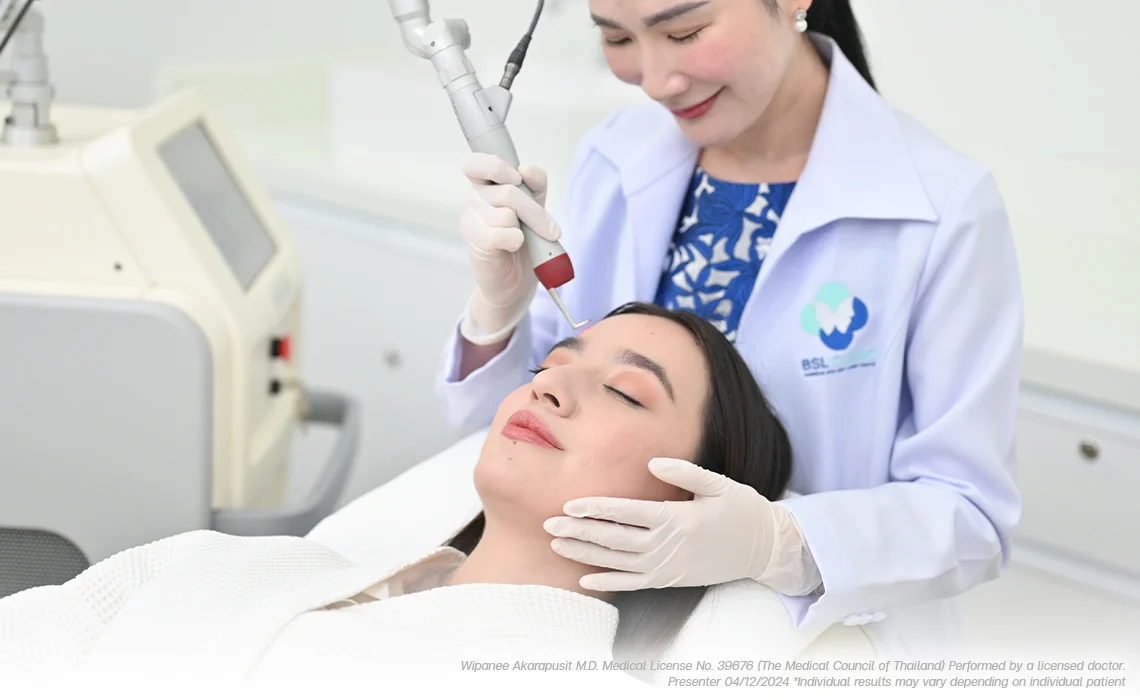
Treatments and Preventions of Melasma at BSL Clinic
1.Laser therapy targets melanin pigments to help manage melasma. BSL Clinic’s doctors carefully select and operate lasers designed for specific skin concerns.
The following steps outline melasma treatment.

Pigmentation Reduction Laser
The lasers use PTP (PhotoAcoustic Technology Pulse) mode to break down pigment particles in the skin while minimizing impact on surrounding tissue, without downtime⁷.
*Individual results may vary depending on individual patient
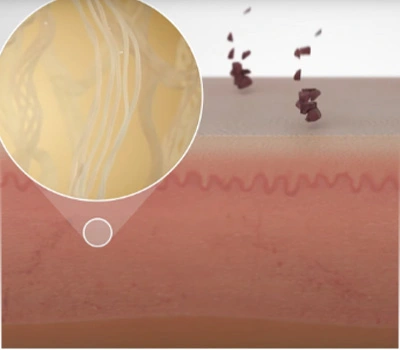
Pigmentation Removal Laser
This laser gently removes excess melanin in the epidermis, helping to fade melasma⁸. It speeds up skin renewal, allowing dark spots to gradually lighten over time⁹.
*Individual results may vary depending on individual patient
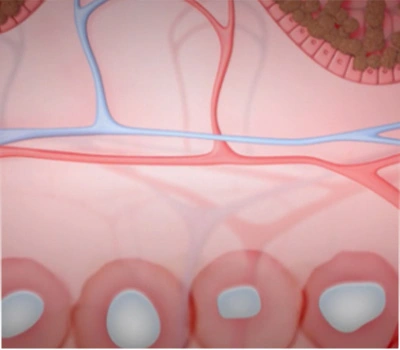
Laser for Promoting Skin Resilience
This laser penetrates the dermis, stimulating collagen production and skin remodeling, which strengthens the skin¹⁰. It improves skin texture and elasticity and enhances overall skin resilience¹¹.
*Individual results may vary depending on individual patient
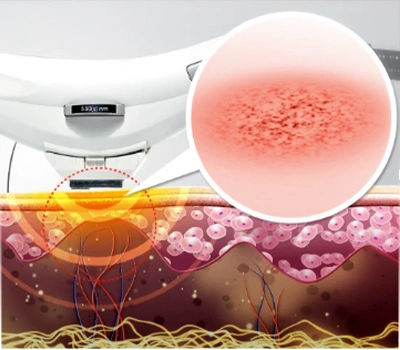
Laser for Vascular Melasma
The laser targets blood vessels to reduce redness and vascular activity, which worsens pigmentation, ultimately improving melasma appearance¹².
*Individual results may vary depending on individual patient
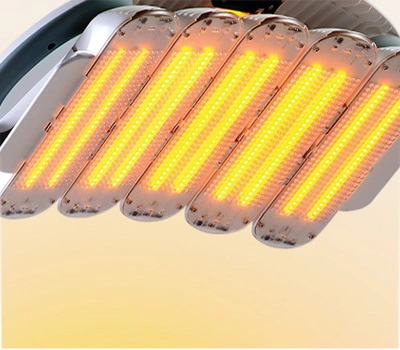
Reducing Inflammation
LED light therapy penetrates the skin, reducing inflammatory mediators and calming inflammation while promoting skin healing¹³.
*Individual results may vary depending on individual patient

Bioregenerative Program
This treatment helps reduce inflammation, restore skin, and boost collagen, improving skin texture and pigmentation¹⁴. It promotes skin renewal, balancing pigment production for a more even skin tone¹⁵.
*Individual results may vary depending on individual patient
How the PicoWay Program Addresses Melasma
The PicoWay Laser Program uses a photoacoustic effect to break down melanin into tiny particles while minimizing heat damage to surrounding tissue¹⁶. Its multi-handpiece system allows precise treatment at different pigmentation depths, making it effective for various skin concerns¹⁷.
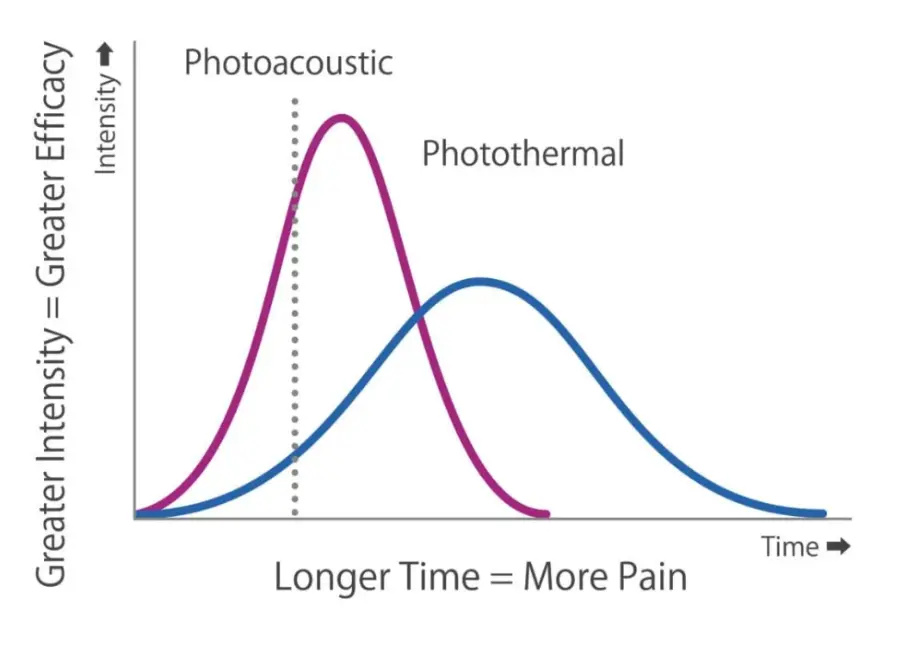
*Individual results may vary depending on individual patient

*Individual results may vary depending on individual patient
The result? PicoWay laser program is designed to help manage melasma efficiently, with minimal downtime. This technology aims to improve skin appearance over multiple sessions while supporting overall skin health.
PicoWay Program
Handpiece Functions and Applications

*Individual results may vary depending on individual patient
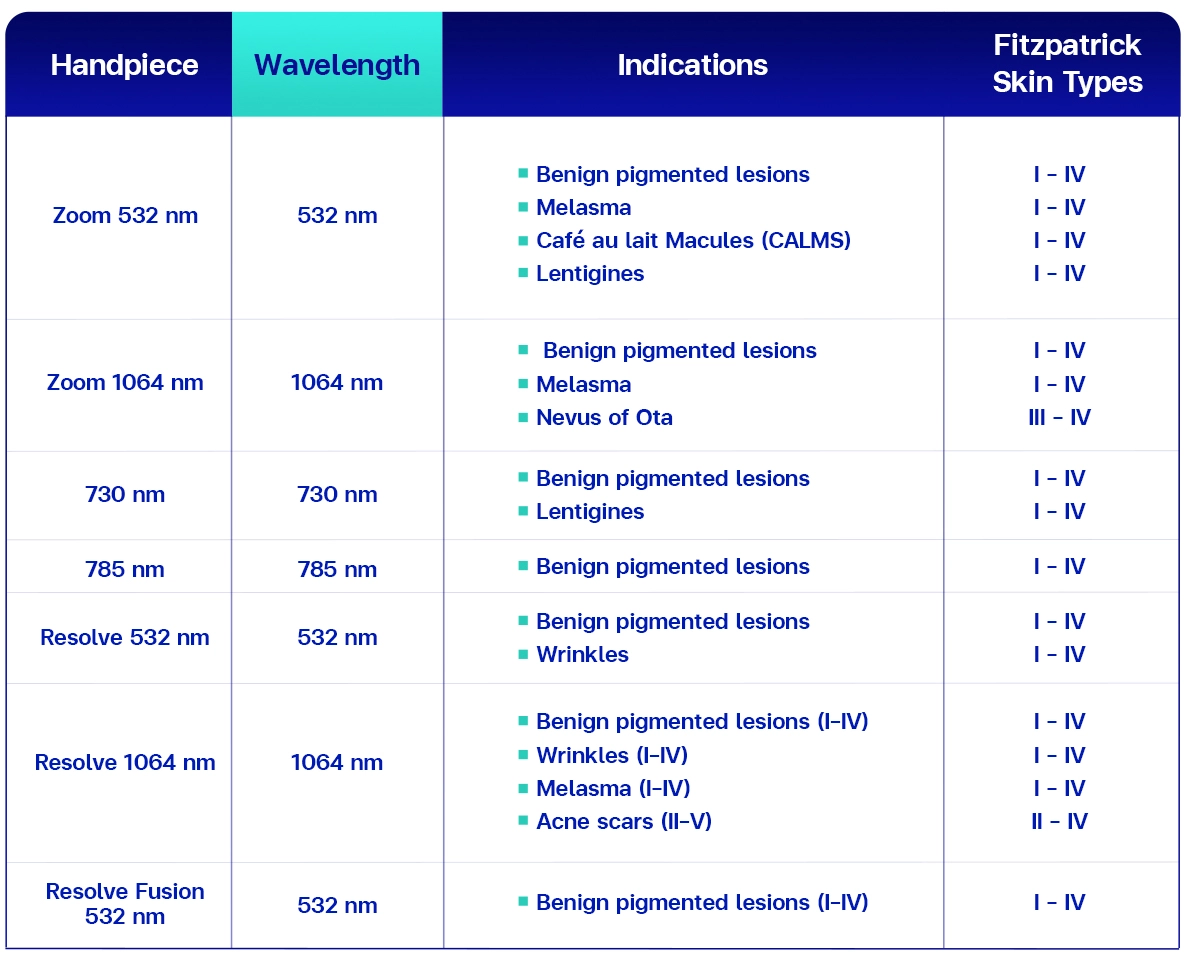
*Individual results may vary depending on individual patient
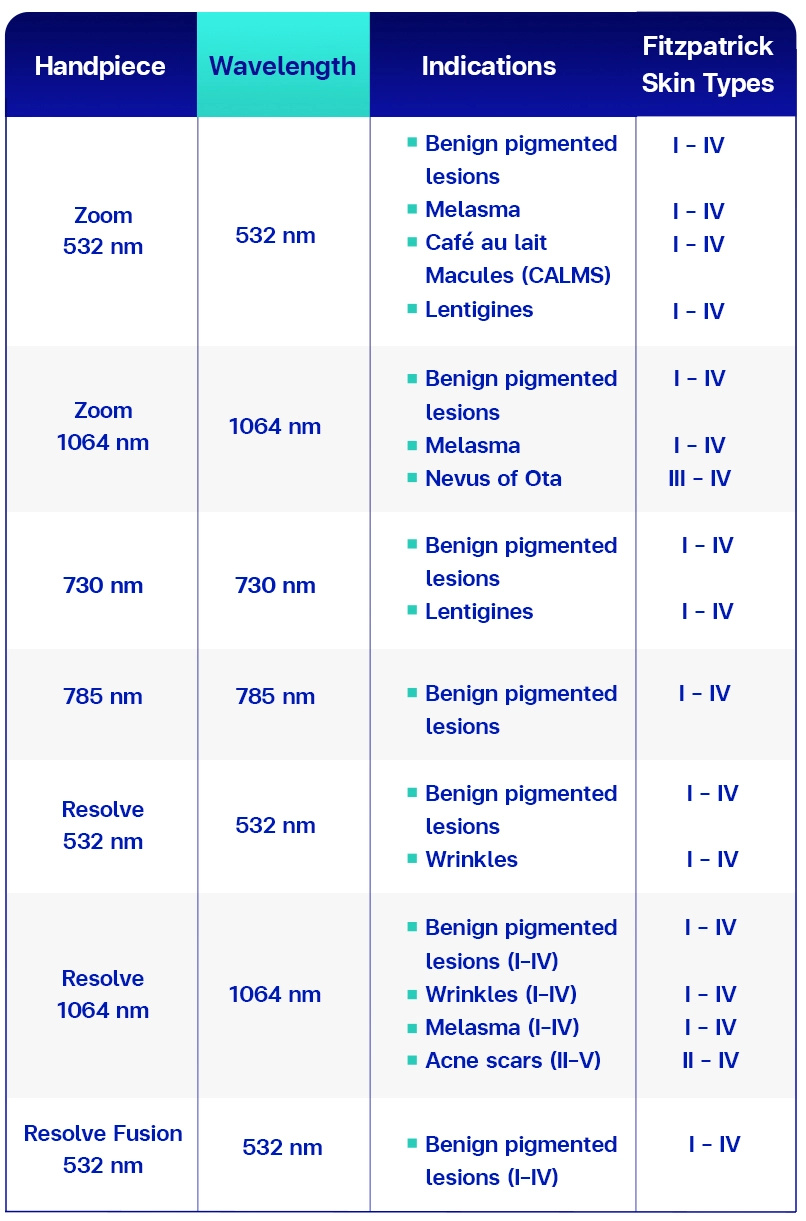
*Individual results may vary depending on individual patient
Candela Medical. PicoWay [Internet]. [cited 2024 Dec 11]. Available from: https://candelamedical.com/products/picoway/

At BSL Clinic, we manage melasma by targeting key factors like excess pigmentation, inflammation, vascular issues, sun exposure, and skin barrier health. Our laser therapies promote skin clarity and balance, including Pigmentation Reduction Laser, Pigmentation Removal Laser, Laser for Skin Resilience, Laser for Vascular Melasma, and Light Therapy.
Our approach features the PicoWay Laser Program, utilizing multiple handpieces and wavelengths for precise, multi-depth treatment. This technology, combined with our integrative care model, helps manage melasma, support skin strength, and promote overall skin health. The goal? A more even-looking, revitalized complexion tailored to your needs.
2. Maintaining Results with Topical Aftercare: Laser treatments help lighten pigmentation, but proper post-care is key to lasting benefits. Regular moisturizing, sun protection, and whitening topicals support and enhance treatment effects.
- Step 1 – Inhibit the activation of melanocyte skin cells.
- Step 2 – Reduce the amount of tyrosinase enzyme, which produces melanin.
- Step 3 – Prevent the occurrence in activity of the tyrosinase enzyme.
- Step 4 – Block the transfer of melanin into the keratinocytes, which is a type of cell located in the epidermis.
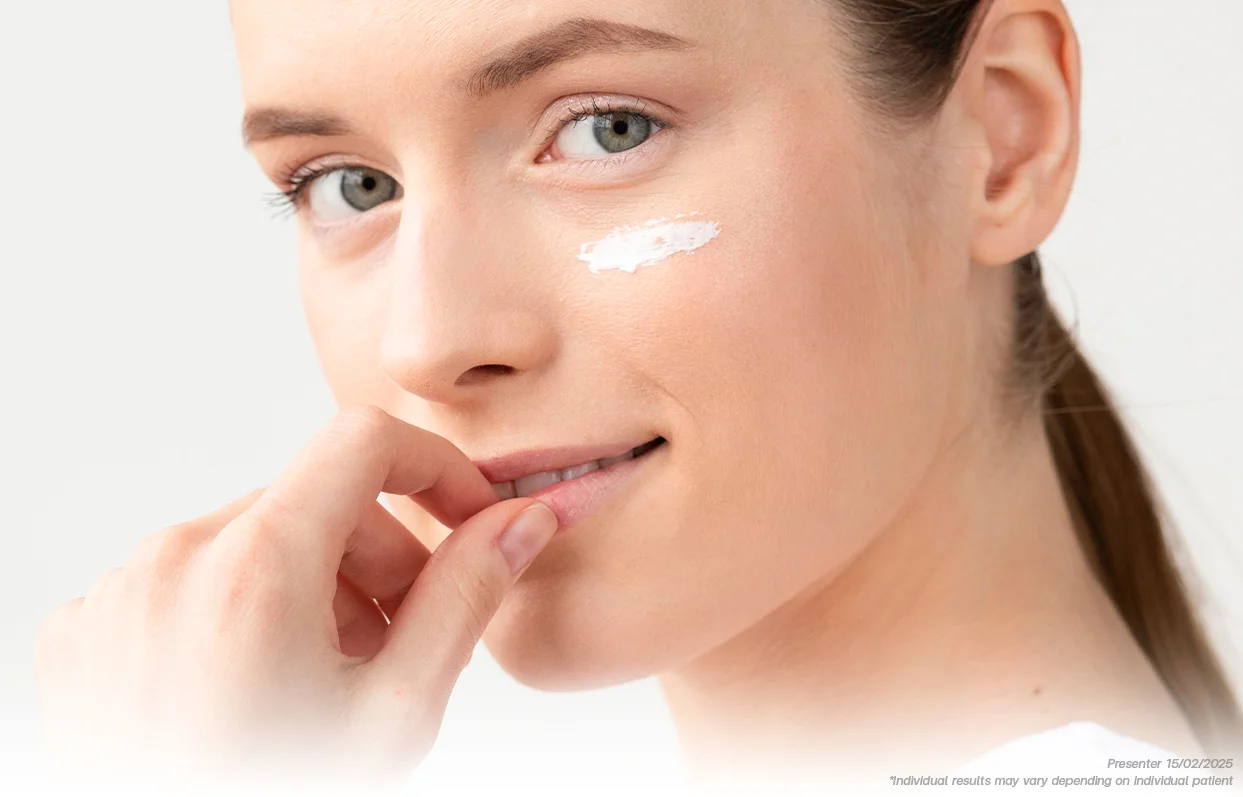
3. BSL Clinic does not use mercury, steroids, or other hazardous substances in skin treatments. These ingredients may cause redness, sensitivity, and skin disorders such as vitiligo or Exogenous Ochronosis (EO), which leads to dark patches.
4. Applying sunscreen (SPF 30+) and using additional sun protection before outdoor activities helps protect the skin from UV exposure. Proper sun care may reduce the risk of skin concerns.
5. Avoid using cosmetics, including whitening creams, that contain chemical enhancers, preservatives, or mercury, as they may contribute to skin sensitivity and pigmentation issues like melasma.
The results?
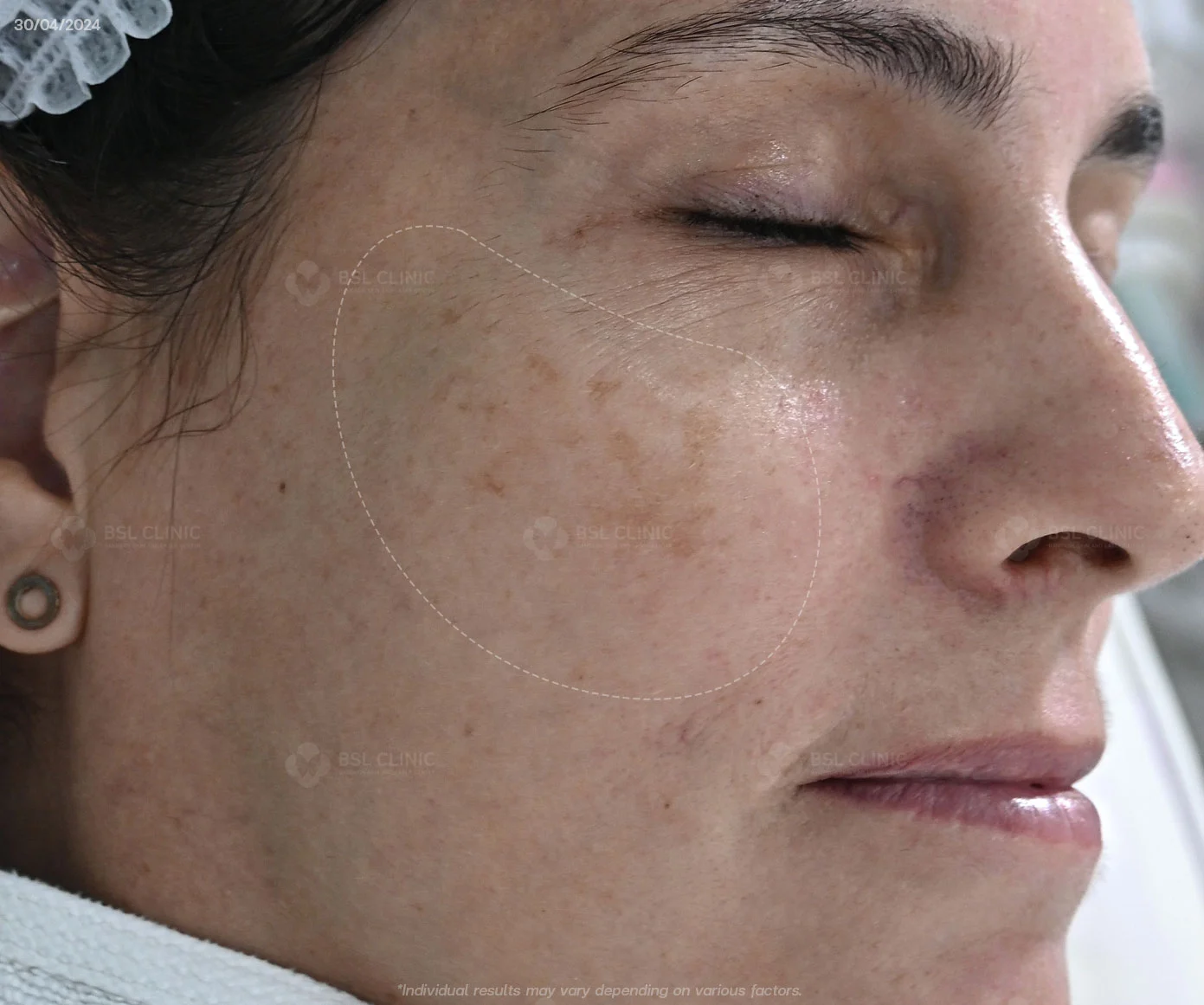
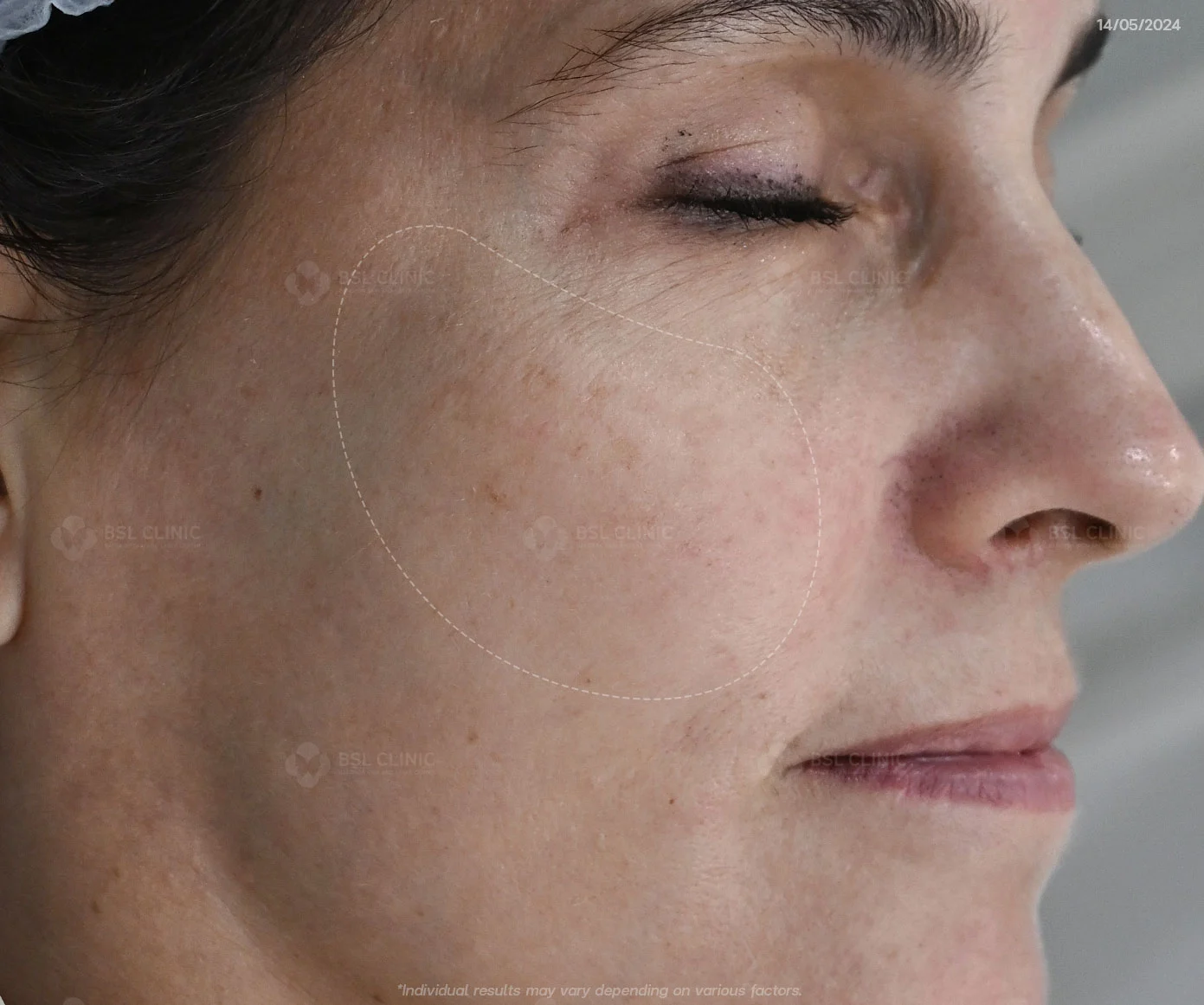
Before and 1 Month After Treatment
*Individual results may vary depending on the patient.
Melasma Treatment Journey at BSL Clinic
Ms. Farah, a self-employed business owner in Phuket, sought treatment at BSL Clinic for melasma and skin discoloration, which had affected her self-image.
She often felt self-conscious when interacting with clients. After discovering BSL Clinic’s Facebook page and learning about their melasma treatment options, Ms. Farah decided to schedule a consultation. She chose BSL Clinic based on their approach to skin care and treatment availability.
Pigmentation reduction laser
This laser targets excess melanin, breaking it down while minimizing post-inflammatory hyperpigmentation (PIH)¹⁸. It also helps regulate tyrosinase enzyme activity, reducing melanin production and preventing further pigmentation darkening¹⁹.
Pigmentation removal laser
Bioregenerative Program
Bioregenerative program repairs the skin, strengthens its barrier, and reduces pigmentation²⁰. By promoting skin renewal, it enhances smoothness, resilience, and overall complexion clarity²¹.
*Individual results may vary depending on the patient.*
Ms Farah’s Testimonial
Ms. Farah was pleased with her treatment experience. She noticed an improvement in the appearance of dark pigmented patches within a month of starting treatment. Two months later, she returned to BSL Clinic for a follow-up consultation and observed a more even skin tone. She shared that she felt more confident interacting with clients at her hairdressing business. Reflecting on her experience, Ms. Farah stated, ‘The treatment here was incredibly amazing’.
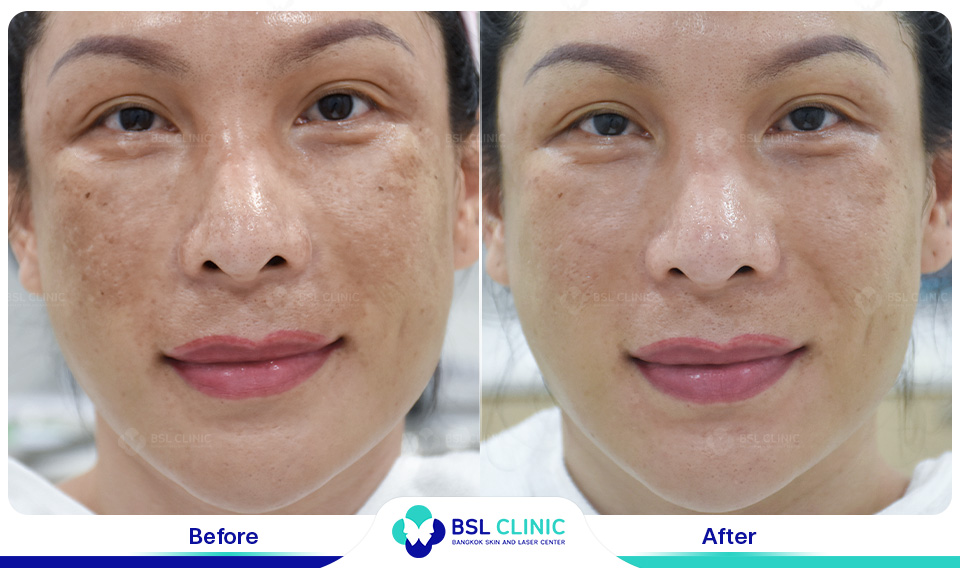
Before and 6 Months After Treatment
*Individual results may vary depending on individual patient
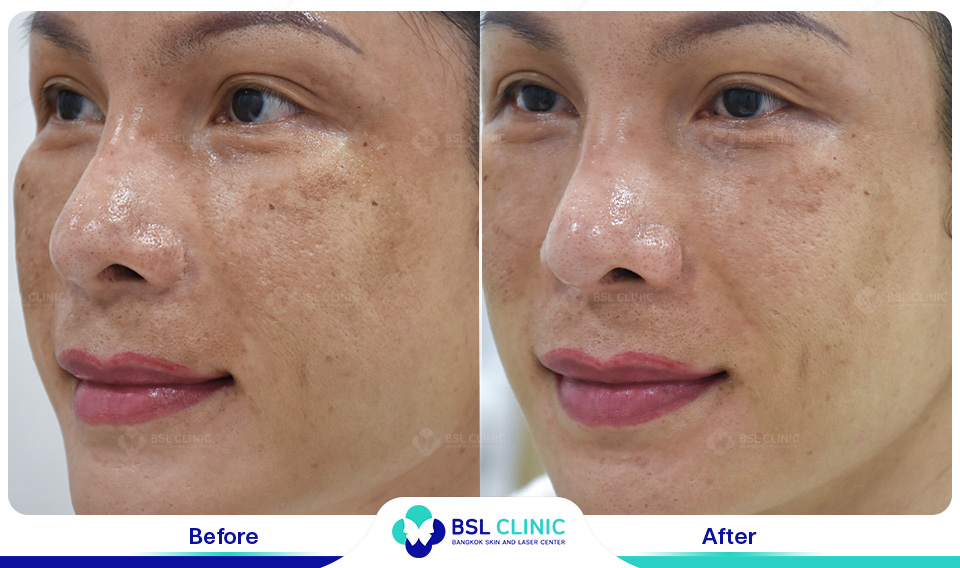
Before and 6 Months After Treatment
*Individual results may vary depending on individual patient

Before and 6 Months After Treatment
*Individual results may vary depending on individual patient
(Note: BSL Clinic would like to thank Ms. Farah for permitting to share treatment information concerning her skin conditions).
References
- Goandal NF, Rungby J, Karmisholt K. The role of sex hormones in the pathogenesis of melasma. Ugeskrift for laeger. 2022;184(6).
- Khanna R, Nowah A, Morris D, Desai S. Pathogenesis of melasma. Dermatological Reviews. 2023;4:12-16.
- Liu Y, Li Z, Wu W, Wang Y, Zhao G, Liu Y, et al. UVR promotes keratinocyte phagocytosis and skin pigmentation through TRPA1 channels. Clin Cosmet Investig Dermatol. 2022;15:1183-1193.
- Wu W, Wang Y, Liu Y, Guo H, Li Z, Zou W, et al. TRPA1 promotes UVB‐induced skin pigmentation by regulating melanosome luminal pH. Exp Dermatol. 2022;32:165-176.
- Verma S, Sarkar R, Sahoo B. Study of contact sensitivity to cosmetic allergens in melasma. Pigment Int. 2021;8:86-94.
- Reple SIF, Oliveira DTG, Perez M, Veiga G, Cunha M, Fonseca F, Alves B. Genotoxicity of permanent hair dye associated with melasma. J Cosmet Dermatol. 2022;21:5252-5253.
- Guo X, Cai X, Jin YC, Zhang T, Wang B, Li Q. Q-PTP is an optimized technology of 1064-nm Q-switched neodymium-doped yttrium aluminum garnet laser in the laser therapy of melasma: A prospective split-face study. Oncology Letters. 2019;18:4136-4143.
- Kurmuş G, Tatlıparmak A, Aksoy B, Koc E, Aşiran Serdar Z, Ergin C. Efficacy and safety of 1927 nm fractional Thulium fiber laser for the treatment of melasma. J Cosmet Laser Ther. 2019;21:408-411.
- Wanitphakdeedecha R, Sy-Alvarado F, Patthamalai P, Techapichetvanich T, Eimpunth S, Manuskiatti W. The efficacy in treatment of facial melasma with Thulium 1927-nm fractional laser-assisted topical tranexamic acid delivery. Lasers Med Sci. 2020;1-7.
- Heng K, Meephansan J, Suchonwanit P. Alterations of collagen type 1, skin fibroblasts, and macrophages following 1550-nm erbium glass laser treatment. J Cosmet Dermatol. 2021;21:1762-1763.
- Naranjo P, Llamas M, Ifrach H, Andrino R. Visible and quantifiable improvement in skin roughness and texture using a high-power non-ablative 1540-nm fractional erbium glass laser. J Clin Aesthet Dermatol. 2022;15(10):32-35.
- Masub N, Nguyen JK, Austin E, Jagdeo J. The vascular component of melasma: A systematic review of laboratory, diagnostic, and therapeutic evidence. Dermatologic Surgery. 2020.
- Vieira ABH, Purificação MB, Ferreira MDF, Costa TD, Lam YW, Ramos FS, et al. Os efeitos fisiológicos do led vermelho no tegumento. RCEC. 2020;1:28-38.
- Tuknayat A, Thami G, Bhalla M, Sandhu J. Autologous intralesional platelet-rich plasma improves melasma. Dermatologic Therapy. 2021;34.
- Acar A, Ozturk A, Sokmen N, Unal I, Ertam Sagduyu I. Evaluation of platelet-rich plasma efficacy in melasma. J Cosmet Laser Ther. 2022;24:36-39.
- Koren A, Niv R, Cohen S, Artzi O. A 1064-nm Neodymium-doped Yttrium Aluminum Garnet Picosecond Laser for the Treatment of Hyperpigmented Scars. Dermatologic Surgery. 2019;45:725–729.
- Evangelista KE, Manuskiatti W, Wanitphakdeedecha R, Techapichetvanich T. Clinical Evaluation of Safety and Efficacy of a 670-nm Picosecond Laser for Treatment of Benign Pigmented Lesions in Asians. Dermatologic Surgery. 2020;47:e153-e158.
- Shen J, Jin J-J, Huang J, Guo Y, Qian Q. Combining large‐spot low‐fluence 1064‐nm and fractional 1064‐nm picosecond lasers for promoting protective melanosome autophagy via the PI3K/Akt/mTOR signalling pathway for the treatment of melasma. Experimental Dermatology. 2024.
- Zarei M, Babaei M. Inhibitory activity on tyrosinase and antioxidant activity of methanol extract of various aerial parts of Astragalus siliquosus Bioss. and Verbascum phoeniceum L. International Journal of Advanced Biological and Biomedical Research. 2020;8:242-252.
Liang Z-X, Wang M-R, Xiang X, Zhao Y. Treatment with injectable platelet-rich fibrin in a rat model of melasma. Eur J Dermatol. 2023;33(5):487-494.
Roohaninasab M, Nilforoushzadeh M, Ebrahimi Z, Goodarzi A, Abouei A, Ziaeifar E, et al. The effect of platelet-rich plasma (PRP) plus microneedling versus tranexamic acid plus microneedling in the biometric characteristics of melasma. SKIN The Journal of Cutaneous Medicine. 2024.

